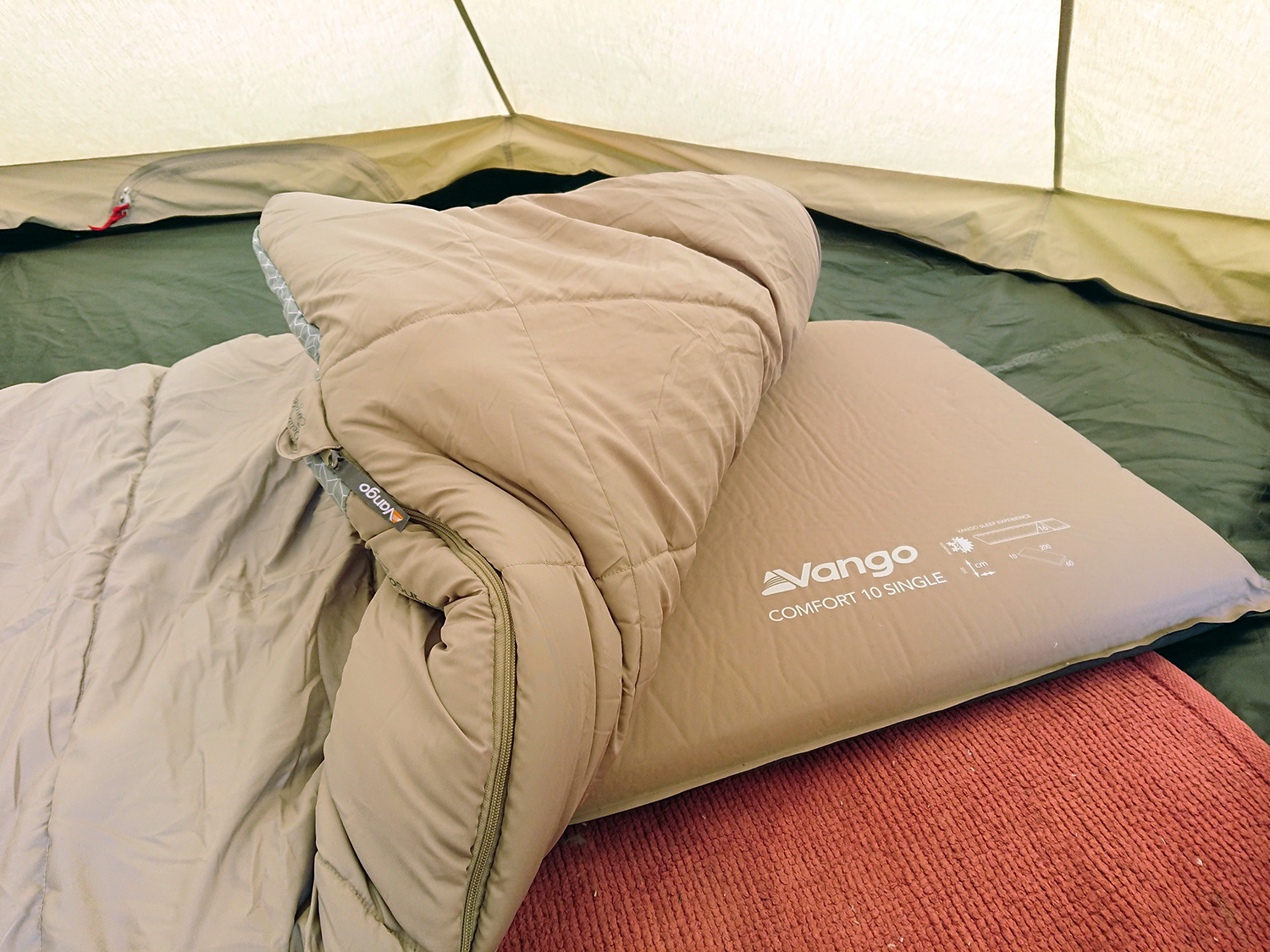Ever wondered what it’s really like to go on a true expedition and follow in the footsteps of intrepid explorers like Shackleton and Scott? Polar explorer Ben Saunders reveals all in this candid interview.
Having done some research, you’ve walked in the steps of Shackleton and Scott, what would you say you learnt about their endeavours?
BS: I think the thing that really blew me away, particularly the journey I did back in 2013-2014 which was three-and-a-half months in Antarctica walking from the coast to the South Pole and back to the coast again. It hadn’t been finished for a century, a guy had done this journey and got close to it back in 1912 so I thought that the journey, literally walking in their footsteps would give me a great experience. I thought it would give a unique insight into what it must have been like for them. In some senses it did that but in other ways it left me with an even greater sense of just absolute awe, sort of awestruck respect at what they achieved and how far they got a century ago. In some ways the conditions were very similar, we spent 108 days on foot dragging sledges, it’s physically and mentally an extremely tough journey but in other ways we had 21st Century technology and we had a safety net that didn’t exist for them. When Shackleton turned around he was about 100m north of the pole. They were more than eighteen months travel away from getting home, no communication so it’s a bit like the idea of flying to Mars now, the idea to take eighteen months to get somewhere and then eighteen months back again, it’s extraordinary. I can’t imagine how isolated they must have felt.
In some ways, yes, Tarka and I are the only living people to walk all the way up and all the way back down again. In some senses we’re privileged to have the insight into what it must have been like but in other ways I now feel just blown away at what they managed to achieve and how poorly equipped and clothed they were.
In terms of the kit, you’ve talked a bit about the technology that you had, it always amazes me what the early explorers had compared to the clothing and the technology we have now. In terms of the kit, there are obviously many differences, but the clothing in particular, how basic was their clothing of the time?
BS: In some ways the principles haven’t changed, they had a windproof outer shell and an insulator underneath, they had balaclavas and face masks and fairly rudimentary goggles. In other ways they’re a world apart, you know, the fact that when Scott and Shackleton were making their expeditions, they didn’t have lifts, they hadn’t been invented yet. A lot of 21st Century technology was actually irrelevant to us, things like breathable membranes in jackets, it never rained in Antarctica, so we didn’t need stuff like that. In other ways you’ve got modern fabrics, one of the big changes for us was down filled clothes, so that’s got a lot better.
Yes, weight is a big difference I’m guessing.
BS: Yes, although having said that it enabled us to do this trip in a way that would have been unthinkable of if we had to be pulling everything ourselves. We both had big support teams, they had prepositioned depots, whereas we started pulling everything, so I’m not saying necessarily we had it harder but actually, yes, contemporary technology and equipment meant that we could start in a very minimalist of styles. The support teams were bringing everything they thought we’d need for nearly twelve months, so in some ways it was enormously different but in other ways, you know, the conditions haven’t really changed, and the experiences aren’t dissimilar. I think the big game changers are the electronic technology, things like GPS, they would have been absolutely gobsmacked by it. They had to do the really complex calculations to calculate their position, whereas we knew it, so GPS is a big one. Then, of course, satellites, which I think you always assume that having a phone and being able to send and receive emails makes things easier, but I think it’s a double-edged sword. If you’re not careful it can exacerbate home sickness and that feeling of isolation. However, you are able to share the stories and I could answer questions from school kids, I loved that.
In terms of the preparation for an exploration, I couldn’t imagine how much preparation goes into one of these trips. I’m sure there’s an enormous amount of detail and project management. Typically, how long would that preparation last for?
BS: Thinking back to 2013, it was several years building up to it. It was training, expeditions in Greenland, testing equipment, clothing and food. There’s about nine to twelve months of training and preparation. In other ways it’s seemed a process over seventeen years now, so in some ways it’s an iterative process but in other ways I’d say about eighteen months and a year of physical training. You have to be a weird fitness jack of all trades because on the one hand it’s an ultra-endurance event. In 2013 we covered 69 marathons back to back. I guess on the surface it seems quite simple, it’s two guys dragging a sled for several months and in other ways it’s incredibly complex and you’re so reliant on every bit of equipment, every bit of clothing. Even the smallest thing is quite stressful and you’re always aware that the expedition is only as strong as the weakest link. So, I get pretty obsessive about clothing and equipment, and nutrition.
In terms of the diet preparation, that obviously has to be quite meticulous.
BS: One of the funniest parts about preparing is fattening up beforehand, I put on 10kg, which sounds wonderful but it’s really frustrating when you’re feeling really fit and you have to deliberately overeat. Ideally you want to put on fat because it stores energy as well. The food itself, that’s my fuel for the journey and that’s all packed in individual sealed bags. There’s a lot of thought and work gone into that because ultimately, it’s an endurance challenge. Again, I had a real interest in the sort of human performance side of it, I always say, yes, I’m not trying to find out where the South Pole is, or the North Pole is, so for me this is almost an athletic challenge rather than an exploration. As far as performance goes, these long self-support exhibitions are about as tough as it gets in terms of endurance. Often nine, ten, eleven-hour days, there’s not much energy left so nutrition is important. It’s always evolving, always changing.
Just a quick question on the essential kits, obviously beyond the skis and everything else, what other equipment would you take with you?
BS: In some ways all of it’s essential, so having shelter, having a tent, having a stove to be able to melt the snow to get water, you know? There’s a whole string of stuff. One of the strange things about doing this is that you have 24 hours daylight, so there’s no obvious delineation between night time and day time, the sun is high in the sky the whole time so it’s very confusing. It’s entirely optional what hour to work in because it’s 24-hour daylight, so I opted to work on UK time just to make things easier with communications and so I don’t get jetlag or anything like that. Your entire life, your whole daily routine is governed by the time, you know, where do you start? Where do you stop? Having a watch that you trust, you know? It is absolutely crucial that you can tell the time otherwise you’re stuffed, you’ll have no idea what time of day or night it is, and everything is done by the clock. In some of the toughest conditions on the planet you had ambient temperatures of the -40s and the -48s, so pretty extreme. Anything with a battery, things like GPS, cameras you have to keep relatively protected so they tend to stay in the pockets of your jackets, but the watch had to be accessible and therefore it was on top of my jacket.
You would assume with modern technology that battery watches are the way to go but, of course, for all the things you mentioned.
BS: Anything with a screen on it tends to get very sluggish and slow so they’re definitely not completely reliable, you have to look after them.
So, almost back to basics in a way. Did you have much involvement in the way the watch was designed?
BS: Yes, the Endurance is an evolution of another limited edition Bremont watch called the Terra Nova. That started back in 2012 and it was a watch I was wearing anyway and that had proved really bomb proof, so we thought that was a good starting point. There are two things that I asked Bremont for and I felt they were both important. The first one was having a 24-hour hand so a separate hand that does one revolution of the dial in 24 hours. That helped enormously with navigation. If you’ve got a watch with a 24-hour hand then you point that at the sun and midday is point north, it’s as simple as that, you can use it to navigate, it’s very, very straightforward. It makes it very easy to navigate very quickly, so the first thing is having a 24-hour clock with a 24-hour hand and then the second thing came down to my obsession with saving weight. Obviously, I’m travelling under my own personal power so the less weight I’m carrying and the less weight I’m dragging around with me then the better. That goes into everything, the food will be dried, the tent, you know, we sort of customise and cut the metal tabs off of zips and replaced them with cords to save weight. We even cut the handle off my toothbrush.
Yes, anything to save weight.
BS: It seemed like fairly minor things, but I set it, so the weight is always much lighter, it has to be, for me, a big width and I think there’s a sort of a mental ego attached to this then you feel more confident when you set off.
A lightweight but robust watch.
BS: Yes, exactly so they managed to tick all the boxes on my list.
In terms of when you get back from an exploration, what do you most miss? Obviously, you have these lengthy trips, do you hanker back to it? Are there things that you miss?
Yes, it’s funny. In some ways the grass is always greener. I spend months and years getting really excited about these big exhibitions but without fail every exhibition I’ve done, as soon as I start I can’t wait to get home and get back in my bed. It’s the most basic things, you miss sitting in a chair, eating with a knife and fork, drinking water out of a tap, being able to walk outside without a face mask. It’s funny how there’s always the initial few months where everything is amazing when you get home. It’s amazing how quickly you take everything for granted and before long you’re fed up as you’re flying to New York and the WiFi on the plane isn’t working, so it’s amazing how you adapt.
You must have seen some pretty amazing wildlife on your recent exploration.
BS: In Antarctica, disappointingly the only life is around the coast, so I saw nothing last year. In 2013-2014 we saw seals at the very start and then at the very end we saw seals, penguins, killer whales. There’s no wildlife in the middle, there’s nothing at all. It’s completely sterile and just giant and white. It’s very exciting to get back to the coast.
The next question is probably quite easy to answer but the biggest danger on an exhibition like this I’m assuming is the temperature.
BS: Yes, you’re right. It’s the conditions. It’s an extraordinary place, it’s as close as I can imagine to being in space. You’re in this environment that without the correct equipment you’d be dead in a few minutes. If you were in the hottest jungle or desert with a pair of speedos you’d survive for a day or two at least but in a cold windy day in Antarctica it would be minutes. It’s about as extreme a climate you can get. It’s really not conducive to life of any sorts and that’s why there’s nothing in it, no animals, no wildlife, there’s nothing living down there. It’s a harsh and hostile environment and that’s the biggest danger. It can feel quite intimidating when the weather is bad, you can get wind chill and it gets very risky. You become aware of the consequences of tiny mistakes and particularly being on my own there for a few months last year, just putting the tent up in a storm, you’re holding onto it and trying to get the poles fixed. If I slip and let go of the tent I’m screwed. Beyond the environment, the North Pole is polar bears, Antarctica crevasses and you don’t want to fall down a hole, so there are other risky places but the biggest one is the weather.
What would be the ultimate exploration for you?
BS: In some ways it was the journey back in 2013-2014, which was finishing the trip that Scott and Shackleton had done. It was the longest ever polar journey on foot, so I’m really chuffed with that. In other ways, I feel like I’ve scratched the edge in terms of my own personal goals and I’m more interested now in telling the story of this place, particularly to Antarctica and I’ve got a few plans of taking groups of people down, especially young people and introducing people to this place and through them trying to tell the story of Scott and Shackleton so that’s the next project, it’s probably a couple of years off yet but we’ll do that. Storytelling, you know, sharing stories of experiences, you could have young filmmakers, writers so that’s the plan.
It sounds very exciting. You must have taken some amazing photography on your trips, you’ve obviously got your own website. Are you on Flickr or social media with photography from there?
BS: Yes, there’s lots of expedition photographs on my own website. Instagram, lots on Instagram, I have polar bears on Instagram so plenty online.
Excellent, good stuff. Those are the main questions, it’s been really interesting and great talking to you. It sounds absolutely fantastic and I’m in awe of the experience that you’ve had. So, your next exploration you think will be with young people?
BS: Yes. I’ve got a few planned for next year, a little bit closer to home but more around ultra-mountain type things. I think the next big trip certainly Antarctica would be to take a group down.
DISCLOSURE: Interview carried out by Bremont.com who are sponsors of this post. You can find out more about our sponsored post policy here.
The post ADVENTURE | Walking In The Footsteps Of Shackleton & Scott – What’s A Polar Expedition Really Like? appeared first on Camping with Style Camping Blog | Activities • Glamping • Travel • Adventure.
from
http://www.campingwithstyle.co.uk/expedition-following-shackleton-scott/
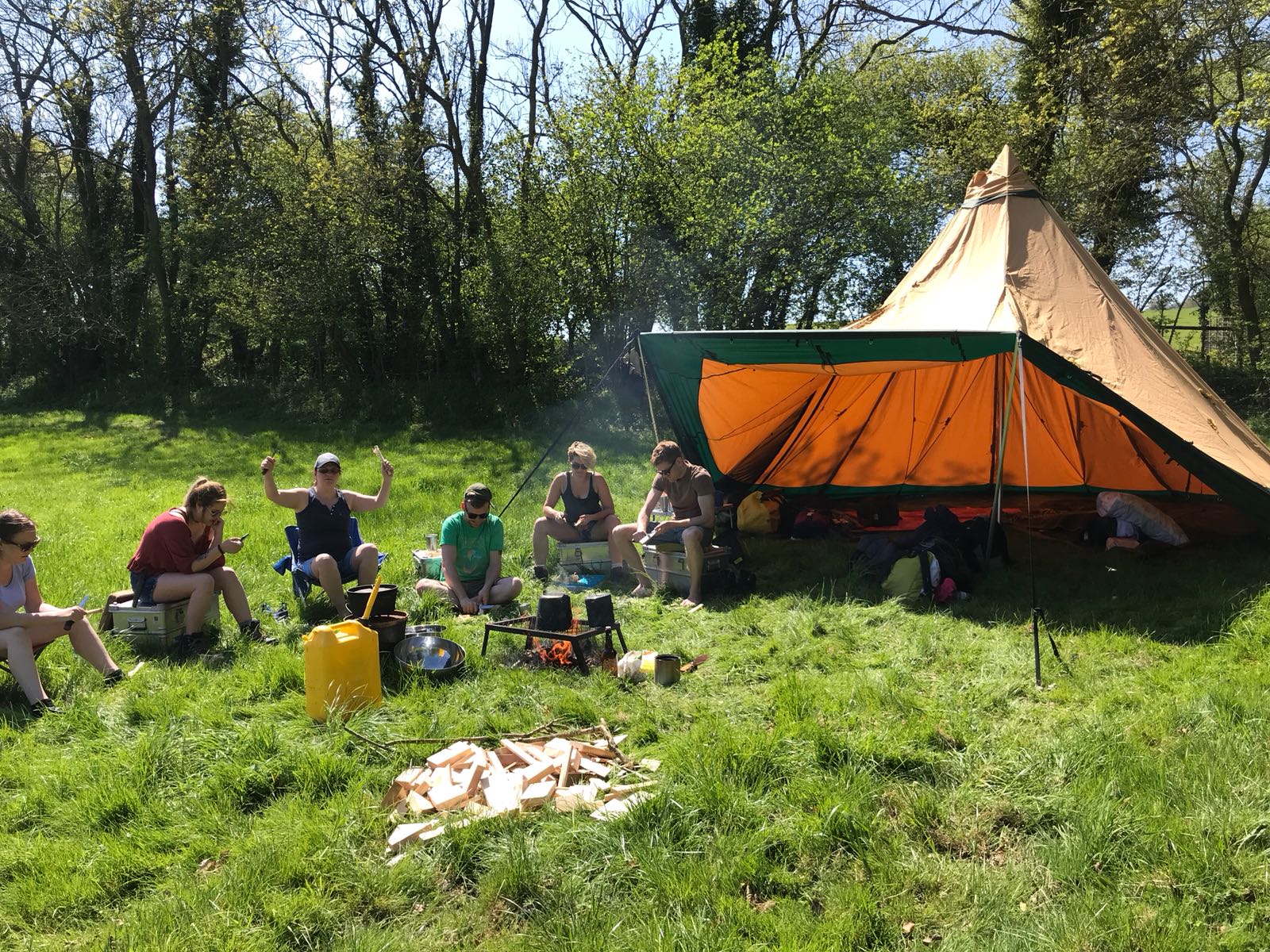
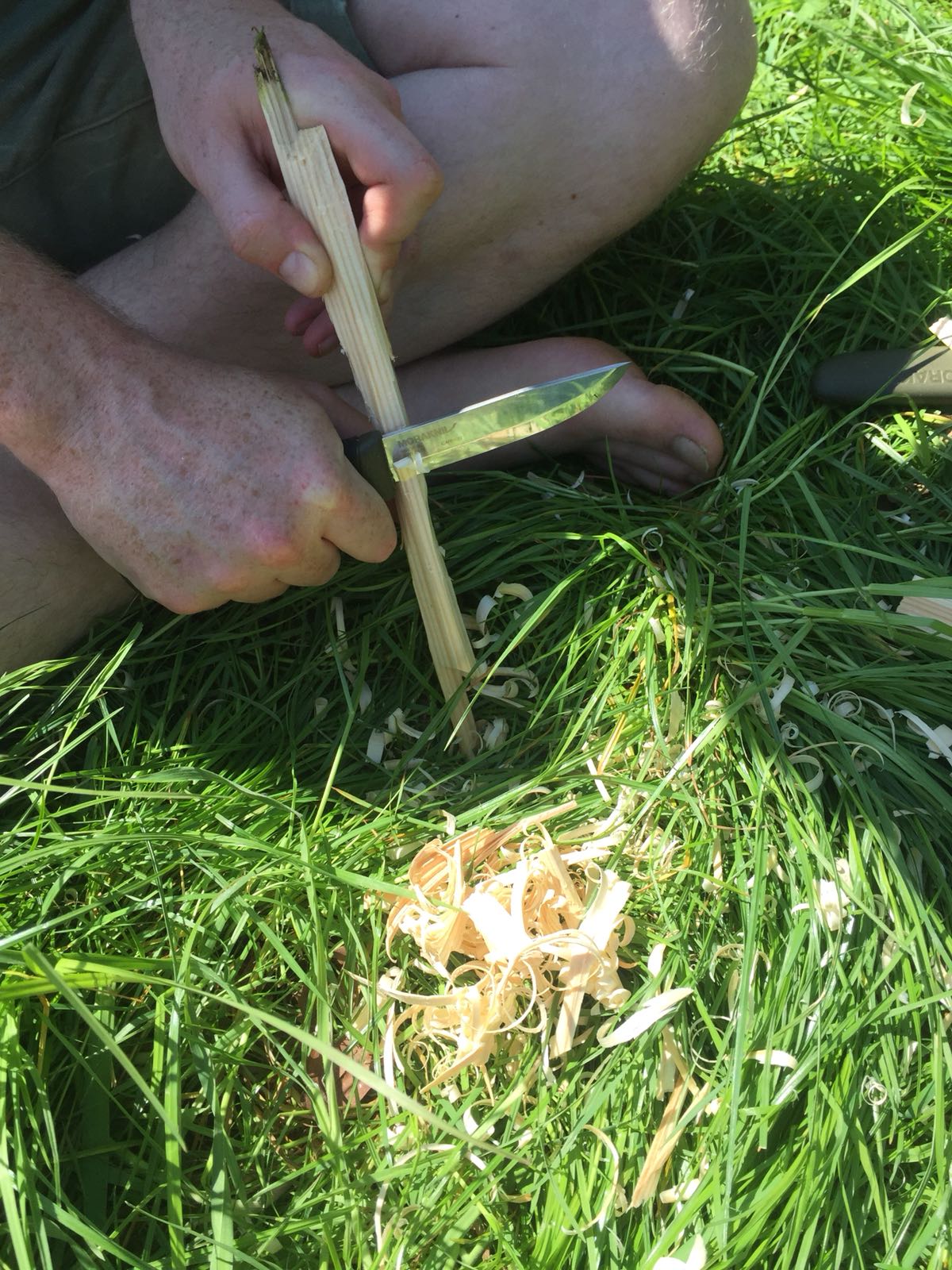 Making wood shavings for the fire, a technique known as ‘feathering’
Making wood shavings for the fire, a technique known as ‘feathering’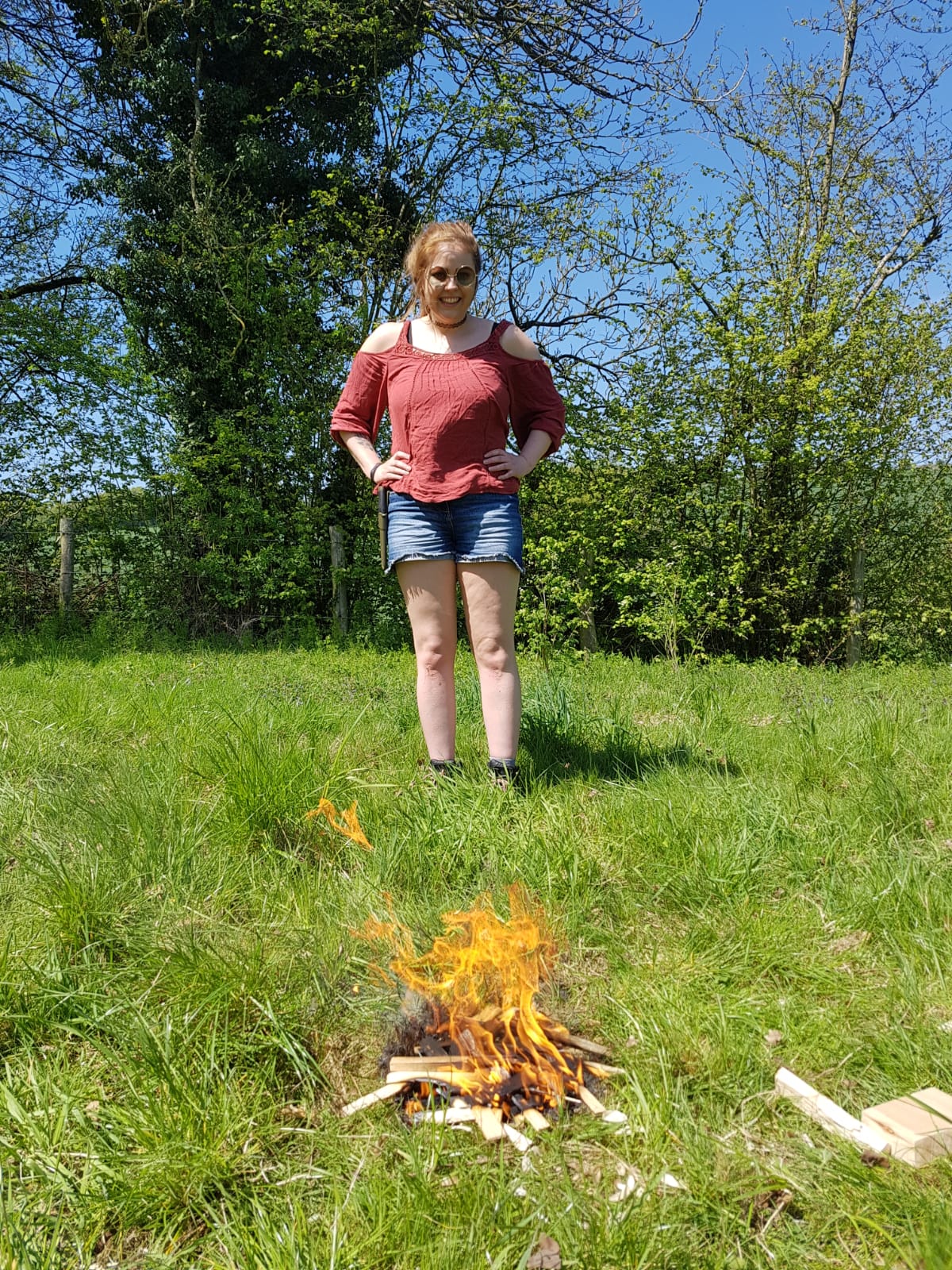 We have fire!
We have fire!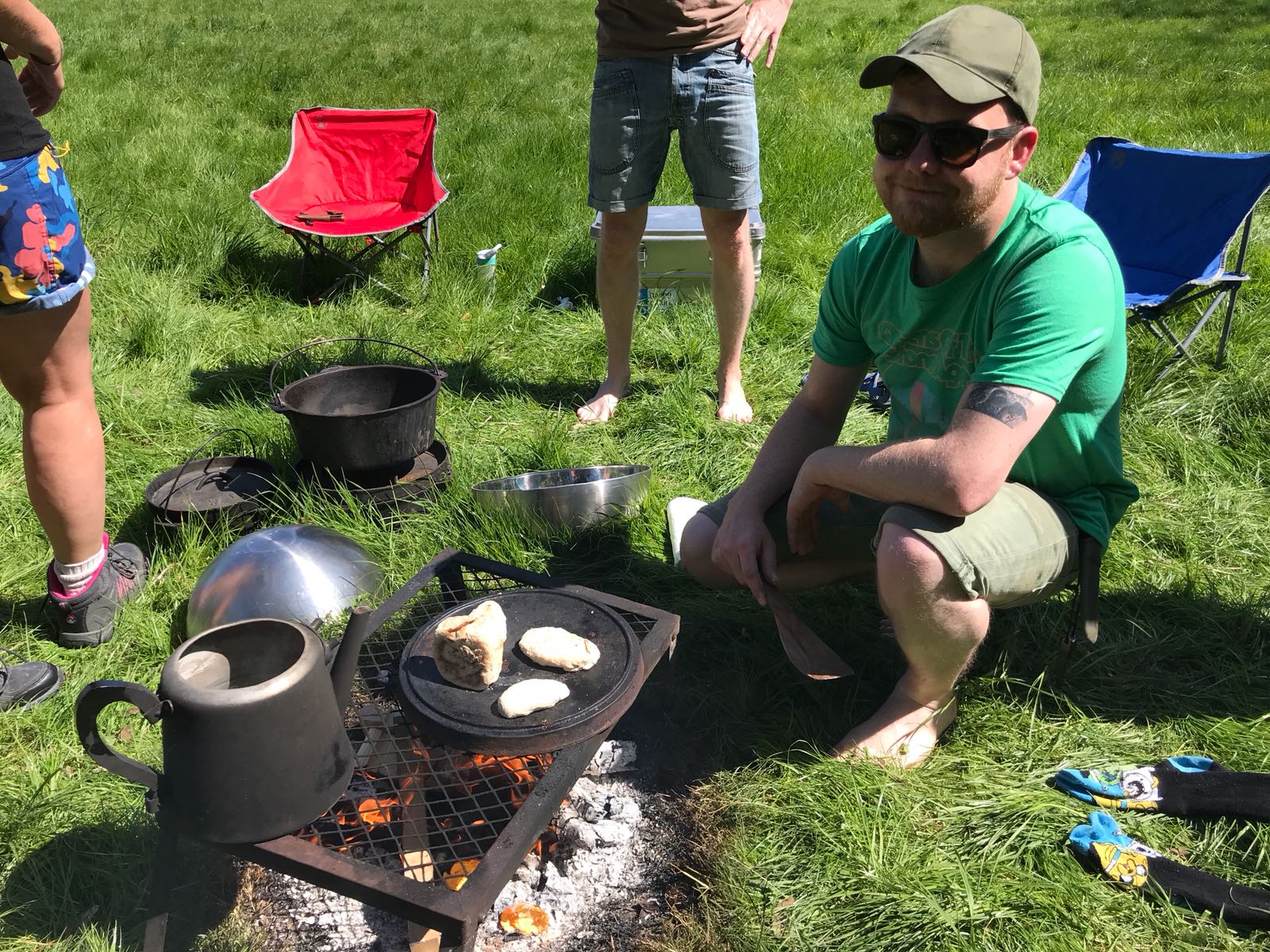 Cooking delicious freshly made bread
Cooking delicious freshly made bread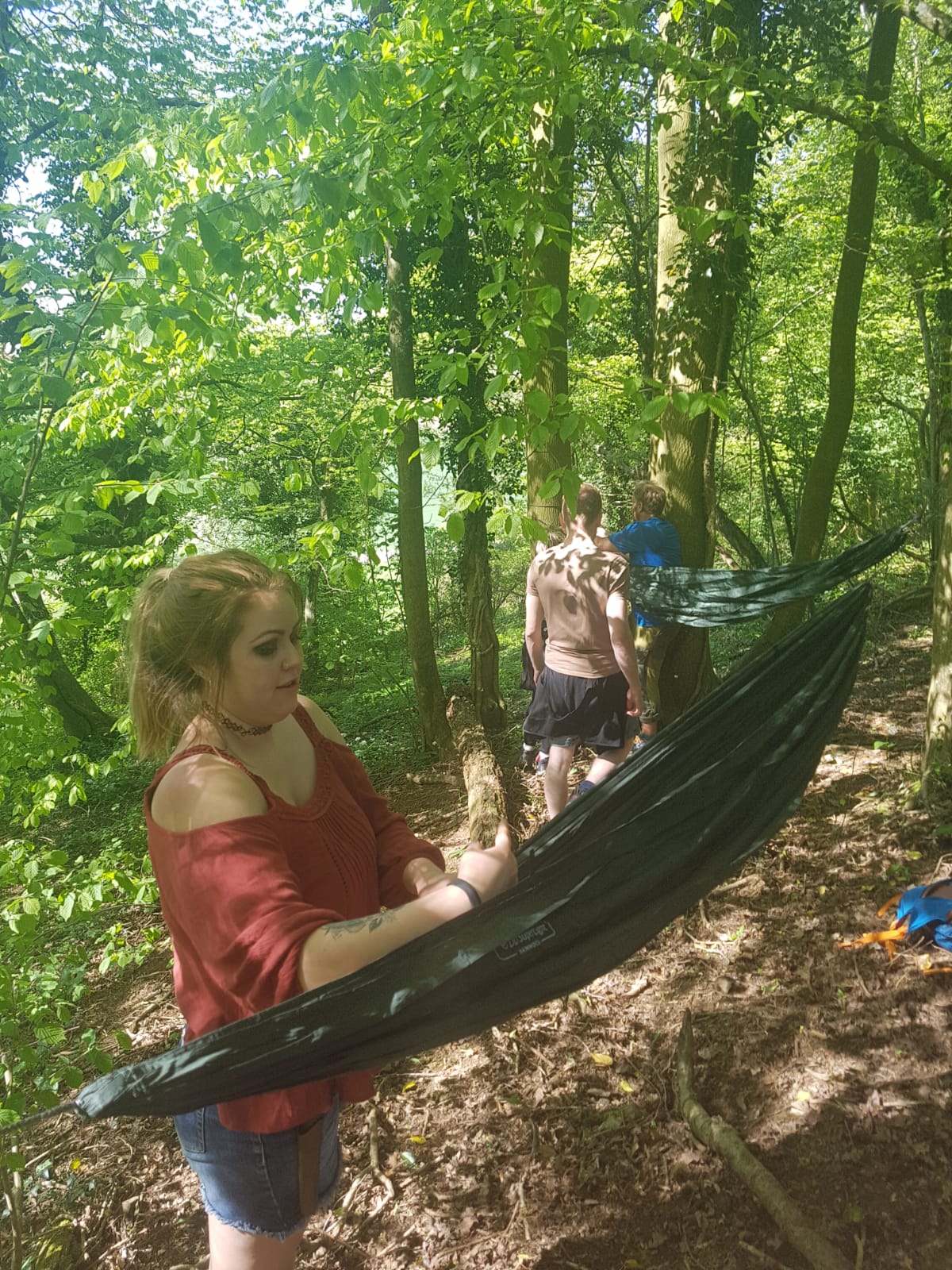 Learning how to set up hammocks correctly
Learning how to set up hammocks correctly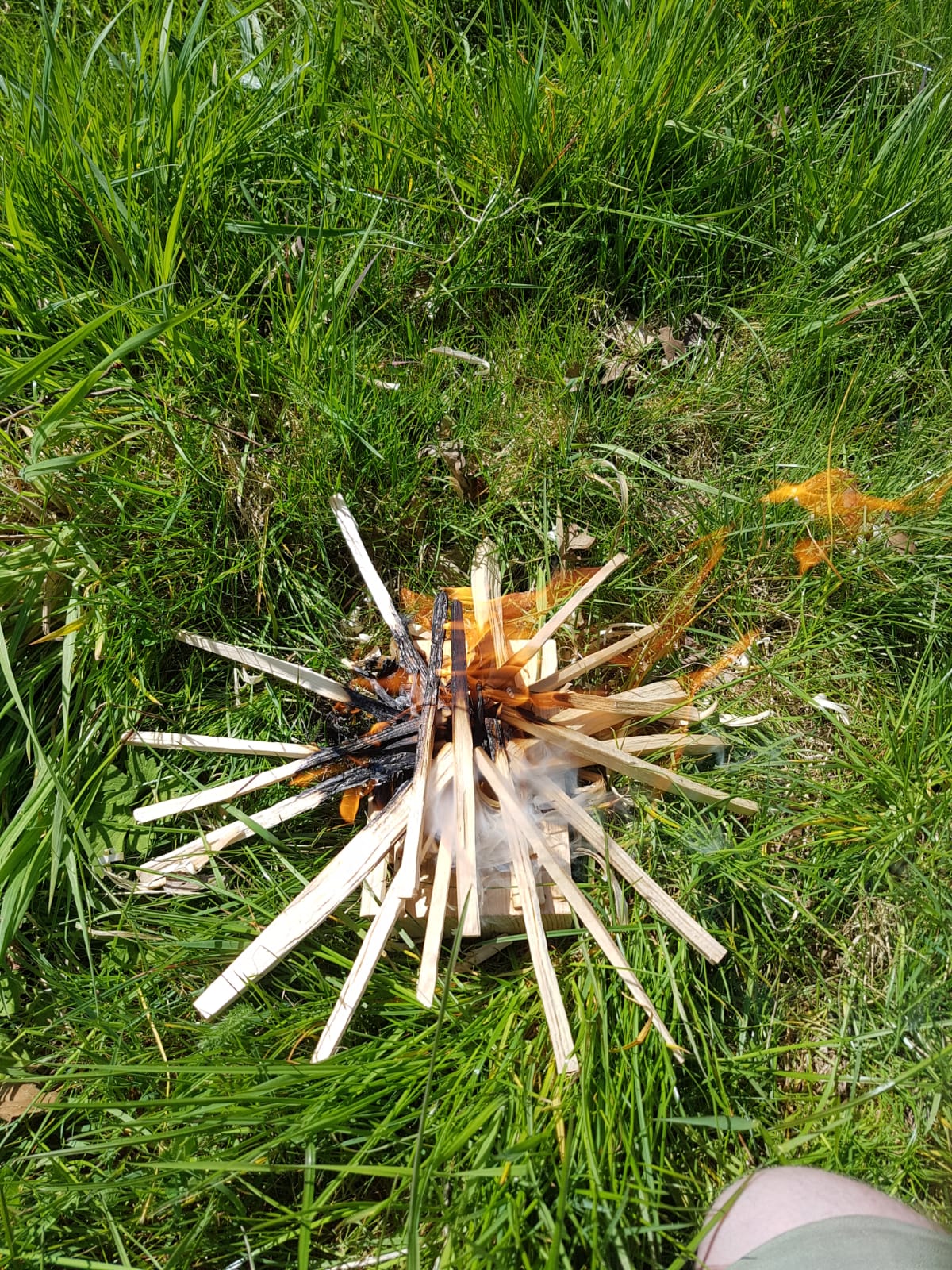
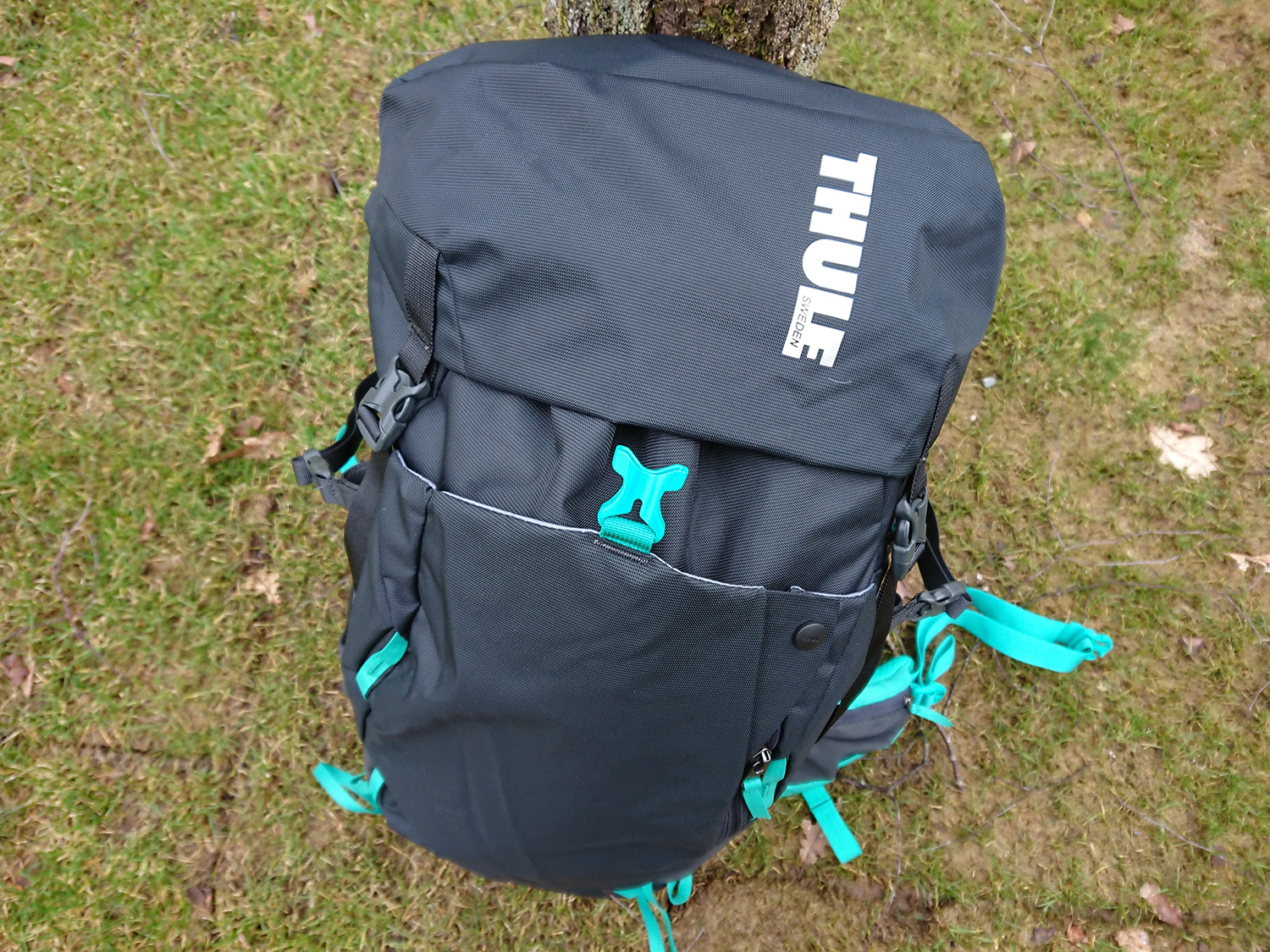
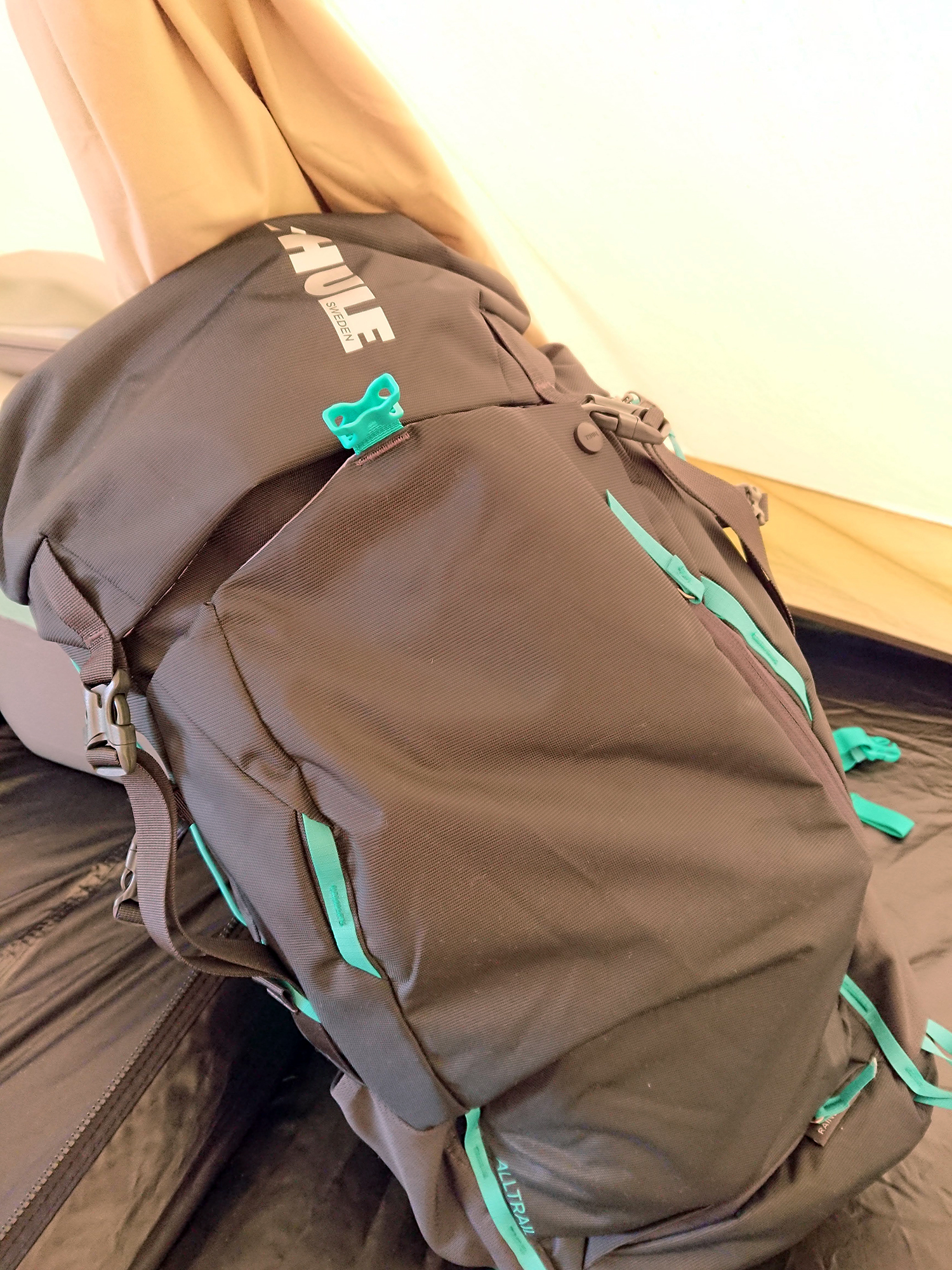 The backpack inside my tent
The backpack inside my tent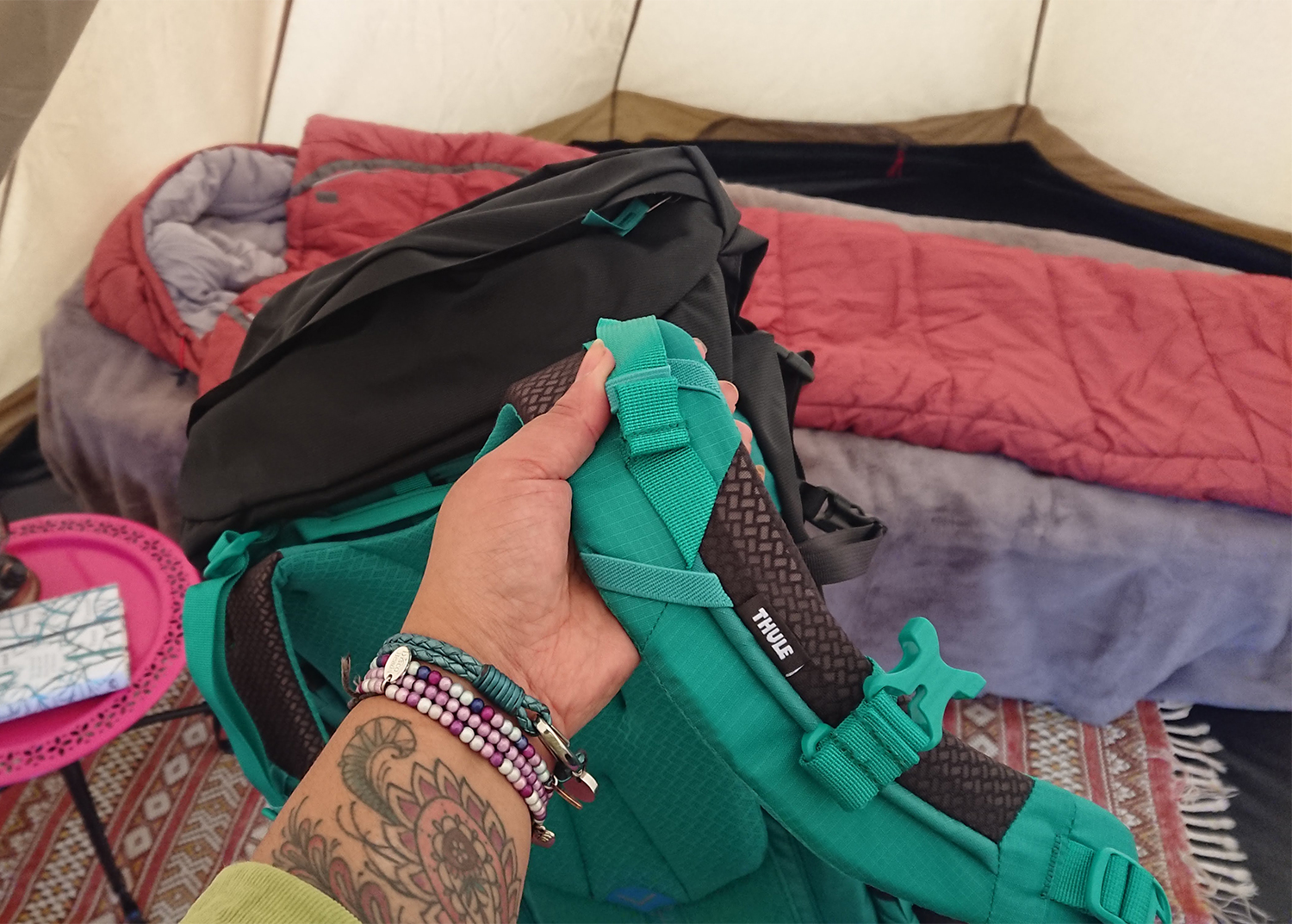 Thick padded straps
Thick padded straps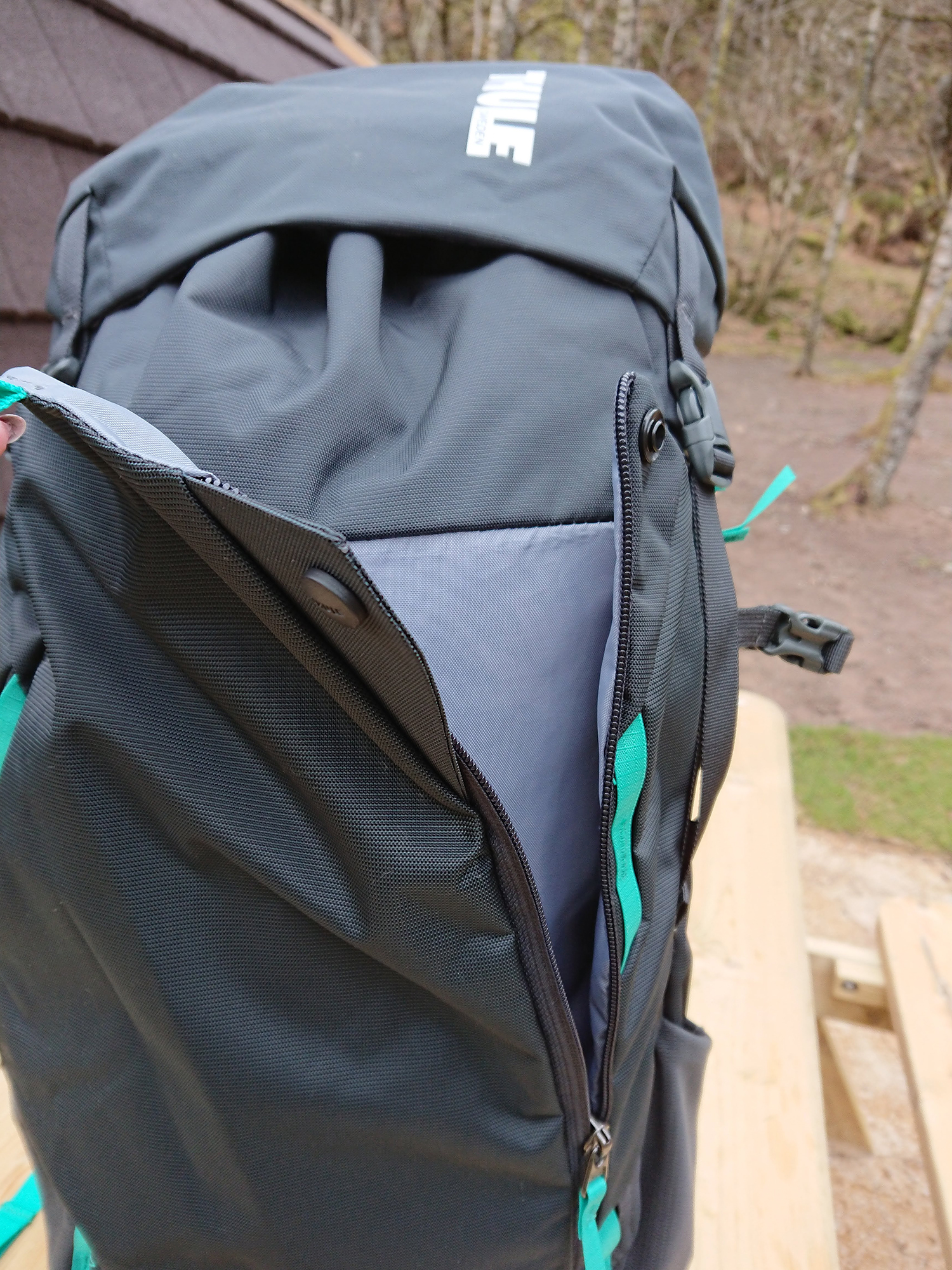 The large front pocket
The large front pocket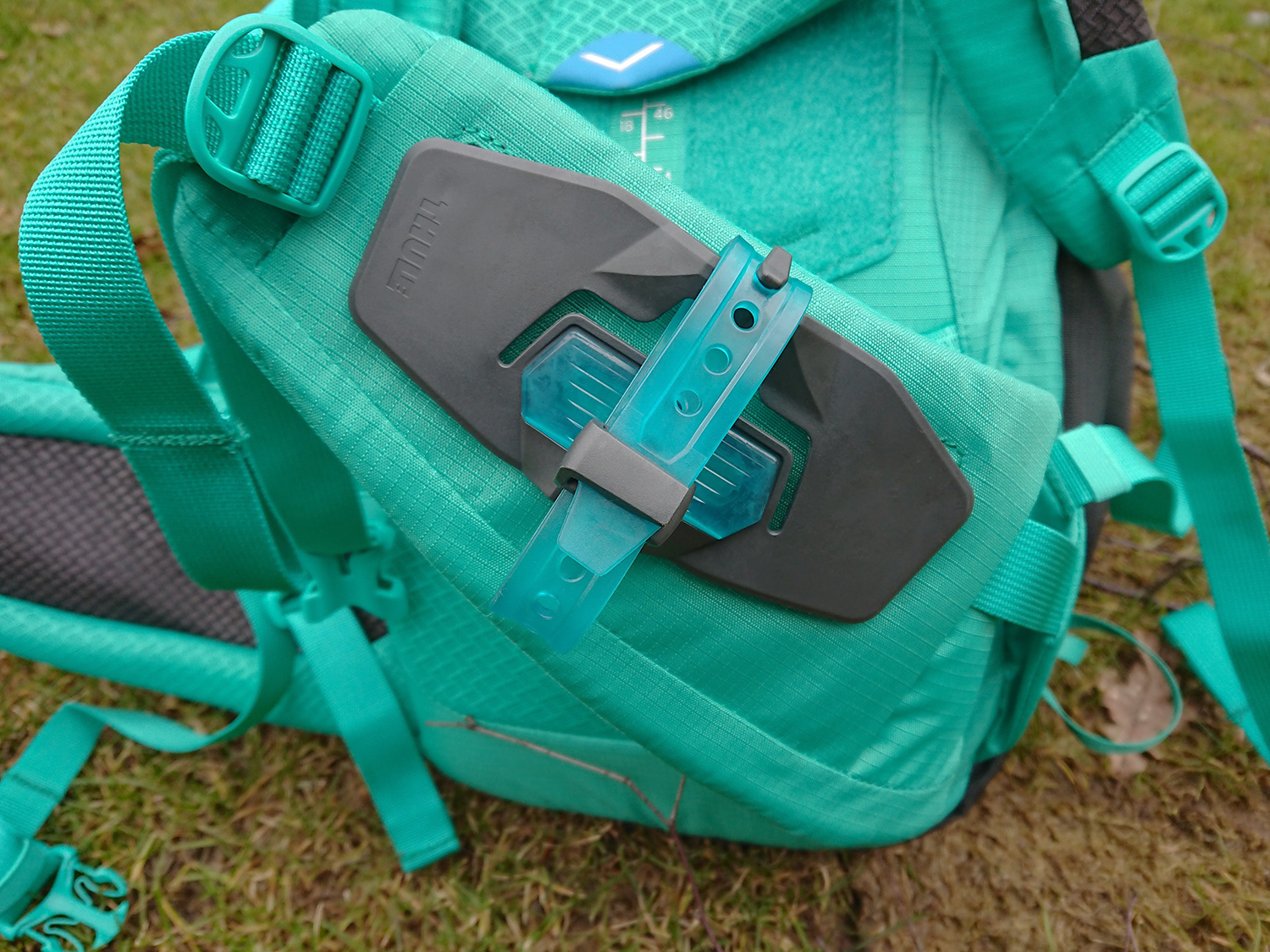 These straps provide very secure storage for walking poles
These straps provide very secure storage for walking poles The padded straps and back adjustment options
The padded straps and back adjustment options The Thule AllTrail 45 backpack, far right shown next to all my gear taken on a recent glamping trip
The Thule AllTrail 45 backpack, far right shown next to all my gear taken on a recent glamping trip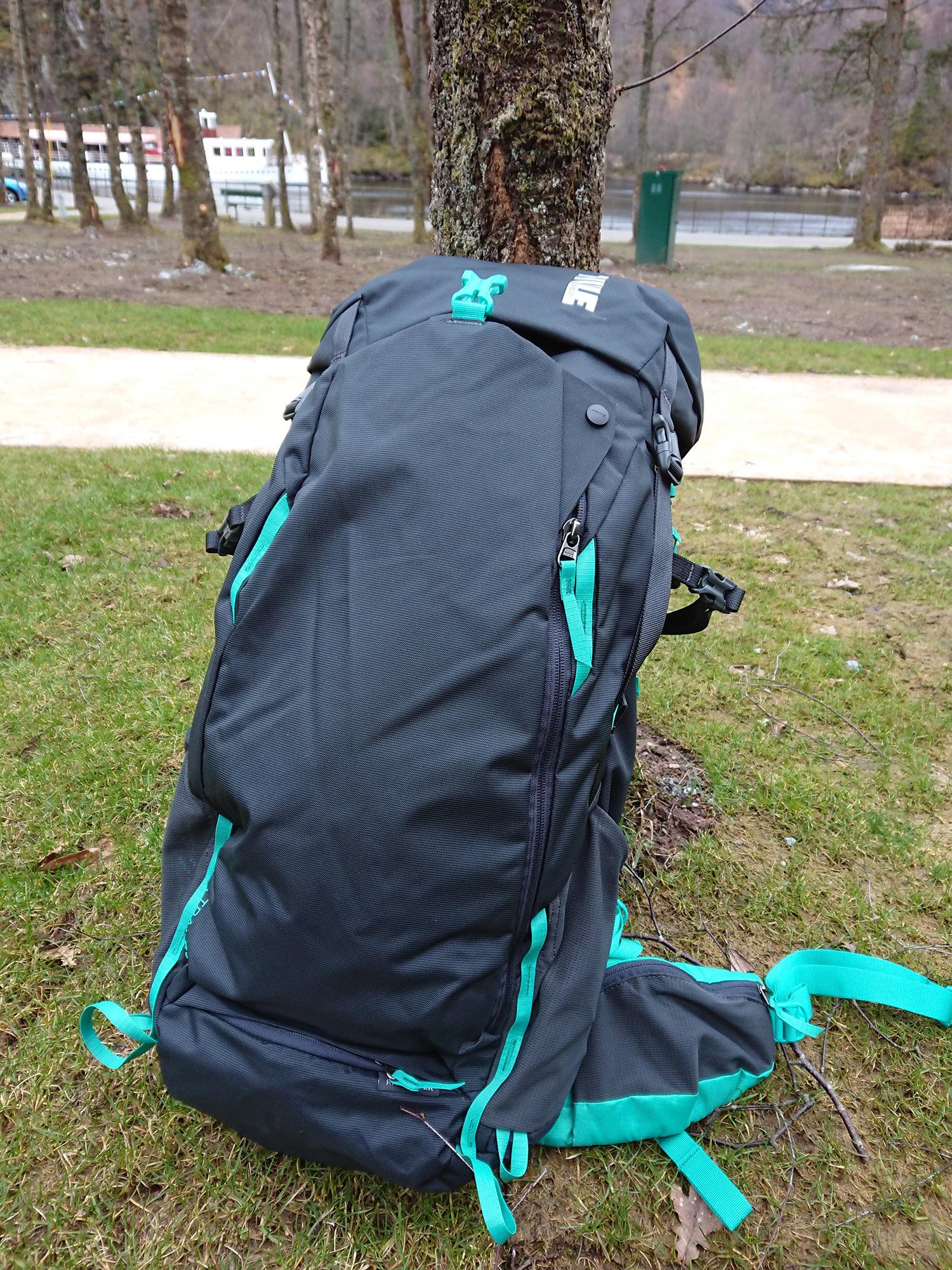

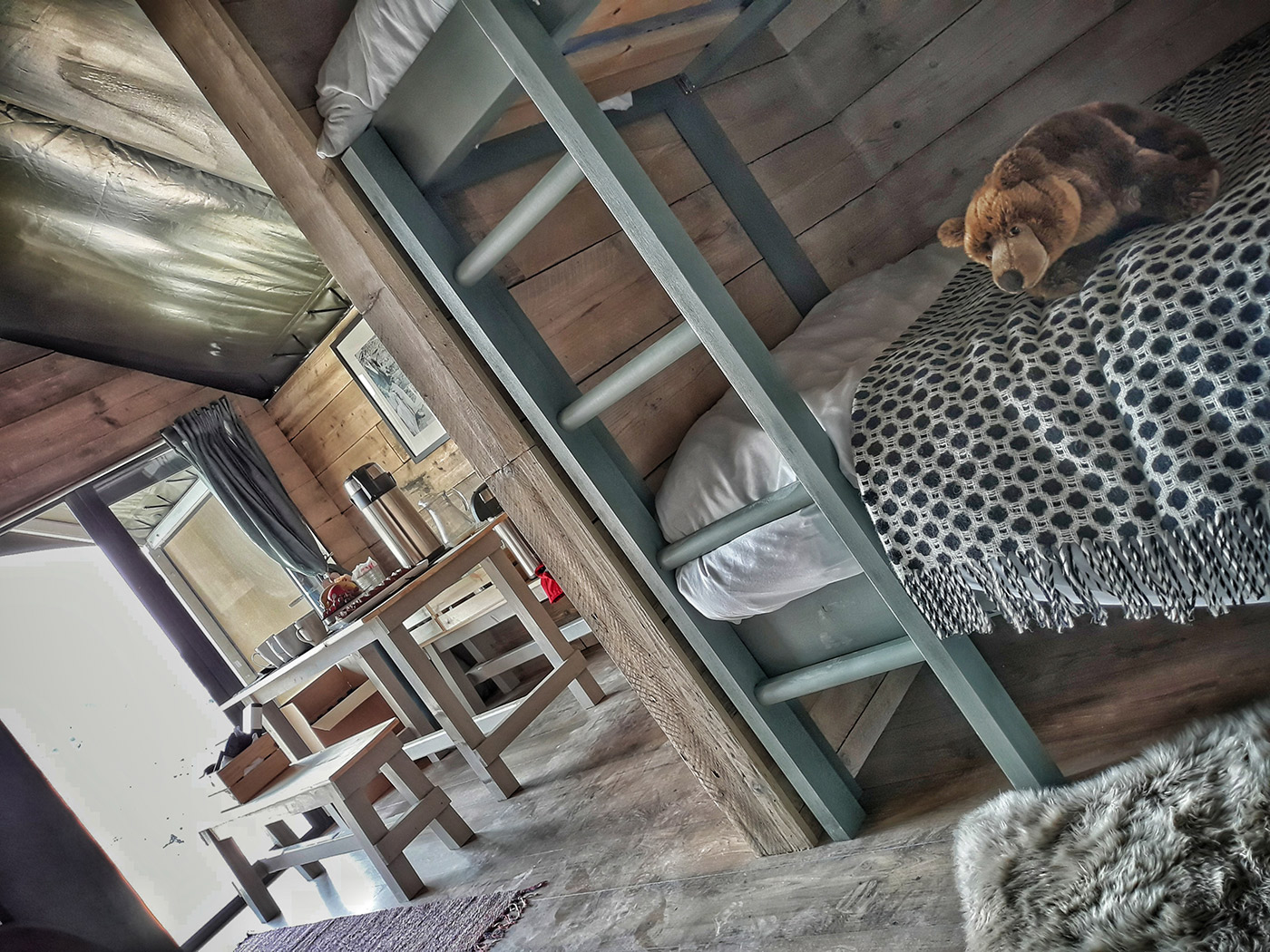
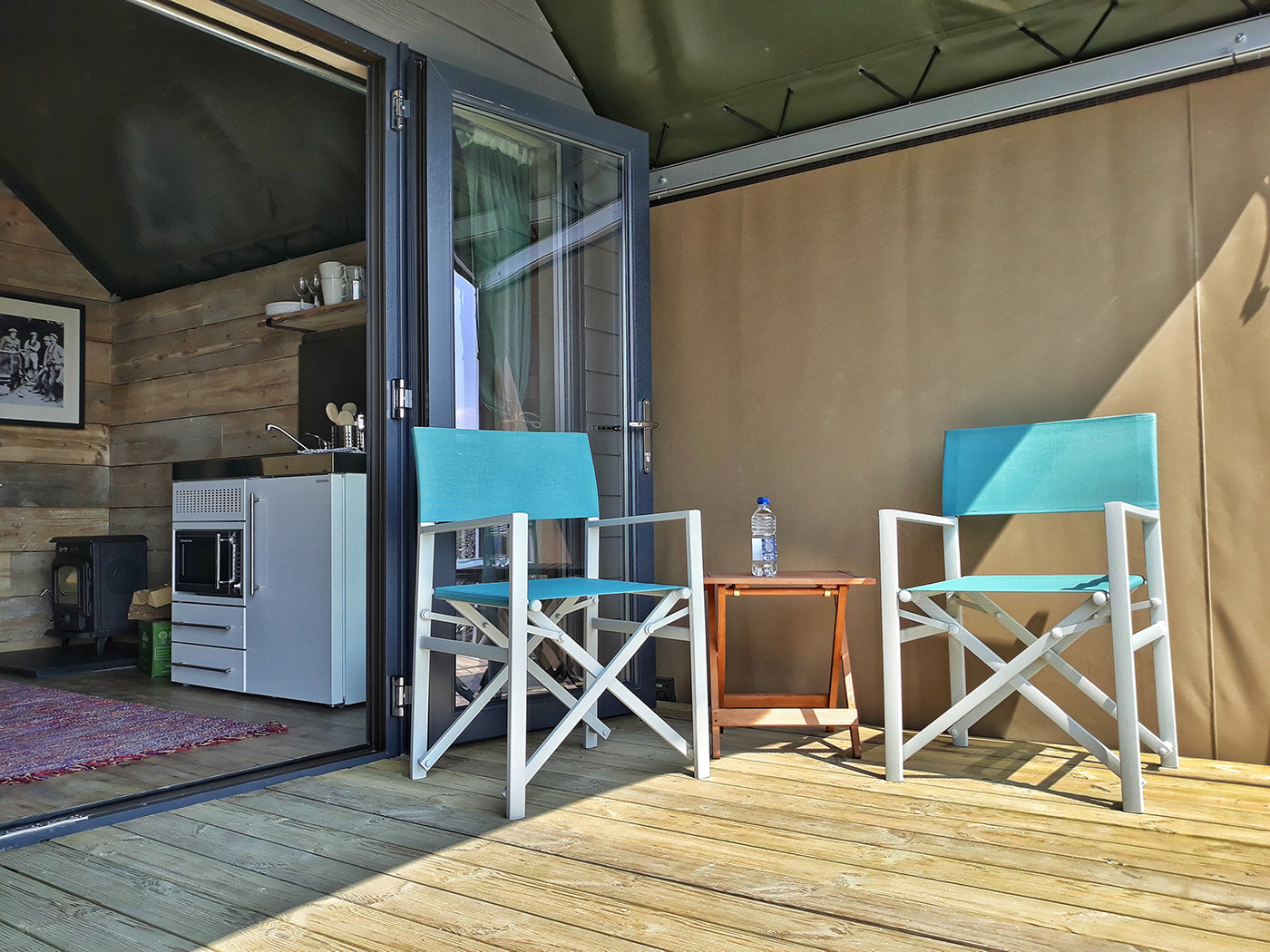
 Mrs Betty Owl chilling in the sunshine on a Mount WIlliam chair
Mrs Betty Owl chilling in the sunshine on a Mount WIlliam chair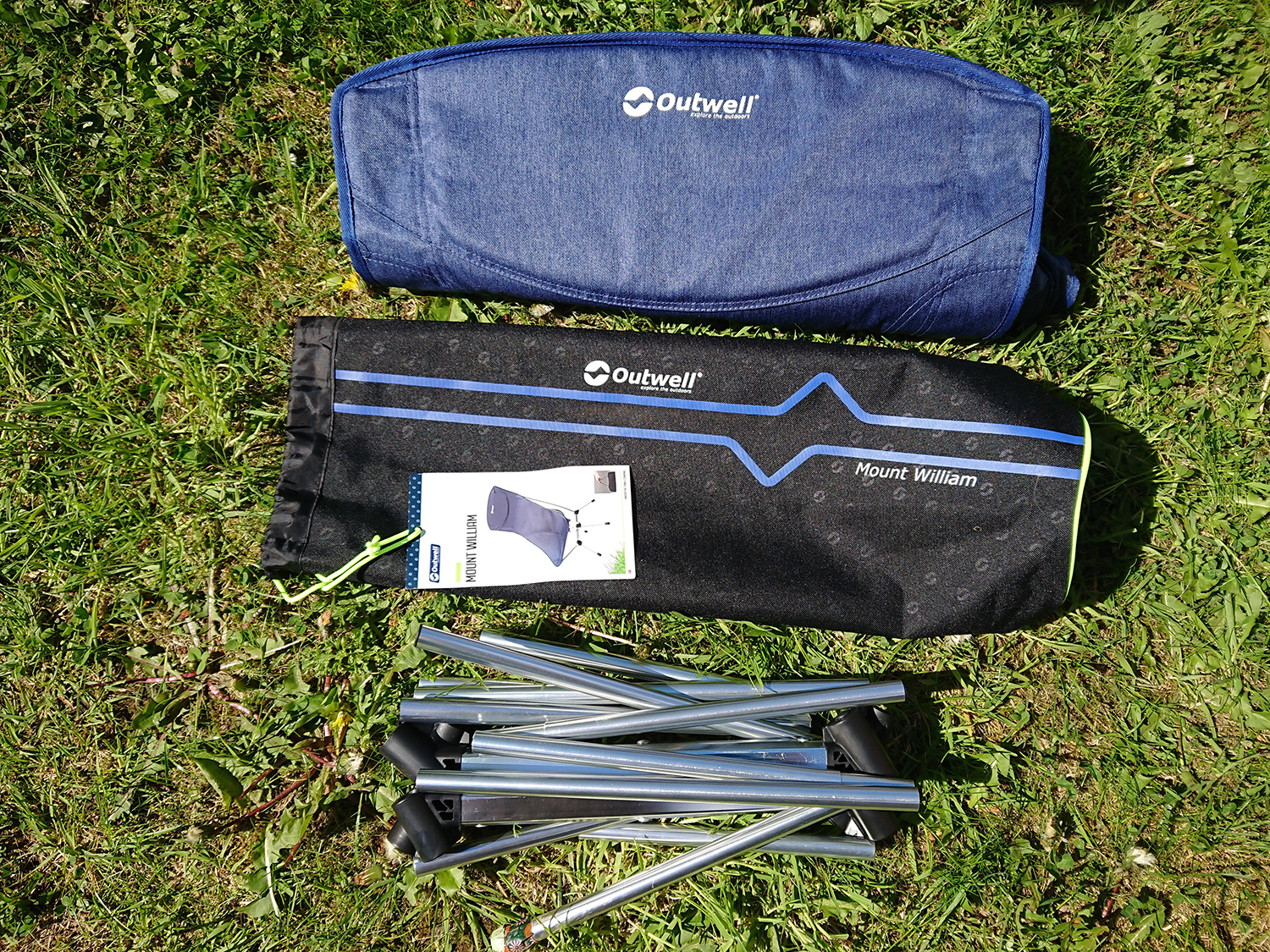 Chair cover, carry bag and frame
Chair cover, carry bag and frame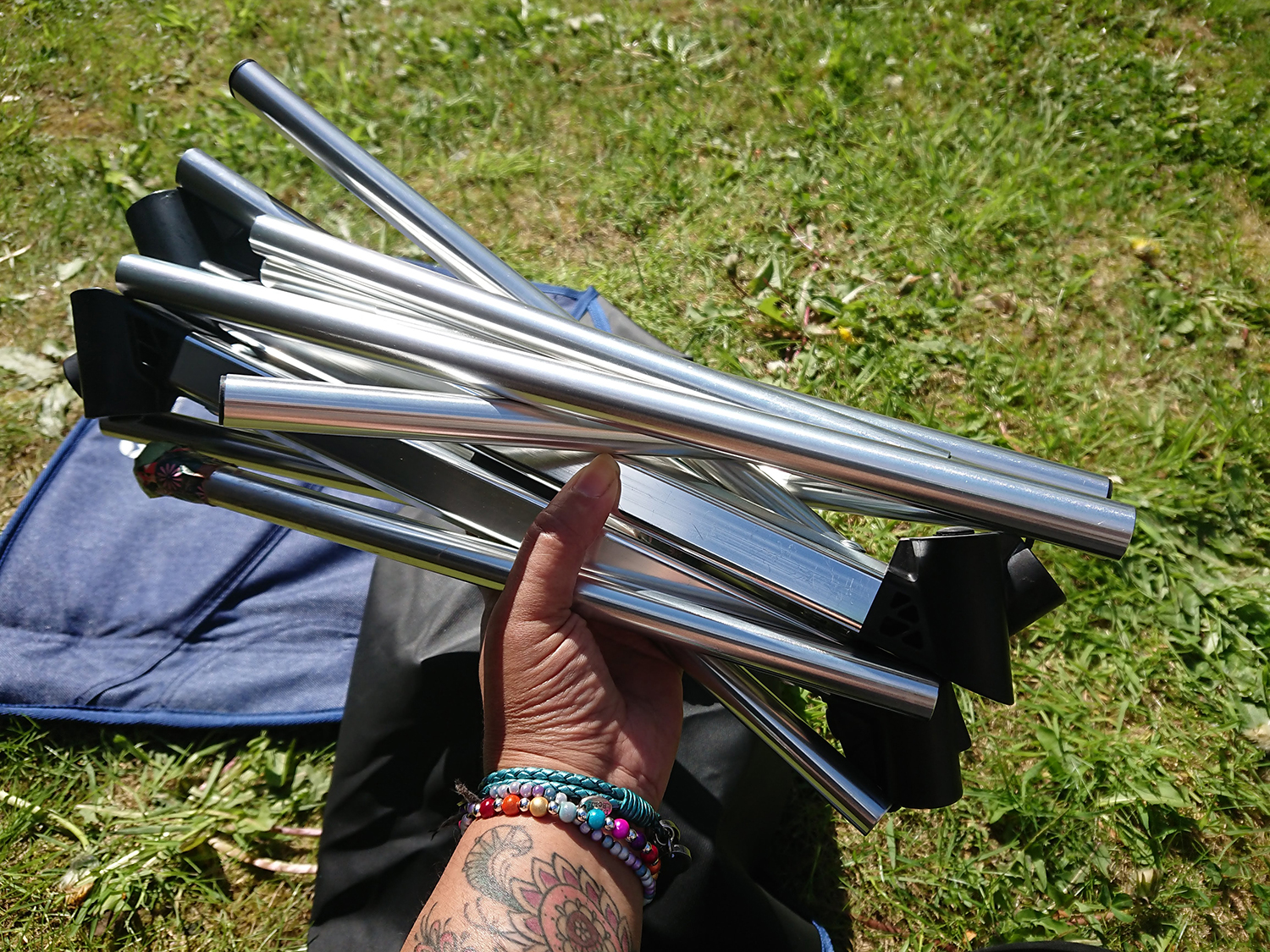 The chair frame waiting to be assembled
The chair frame waiting to be assembled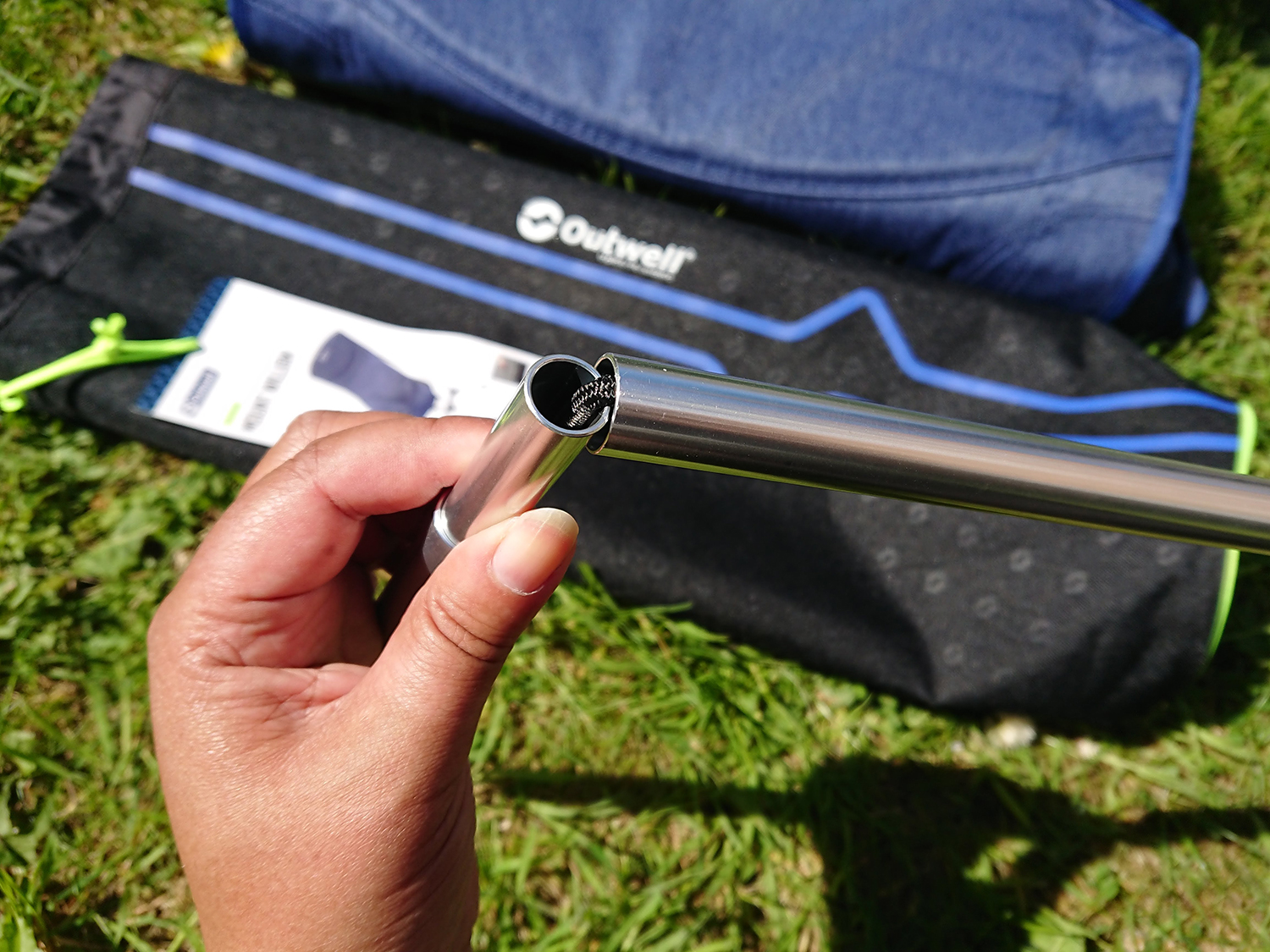 The poles all easily snap together to asemble the chair frame
The poles all easily snap together to asemble the chair frame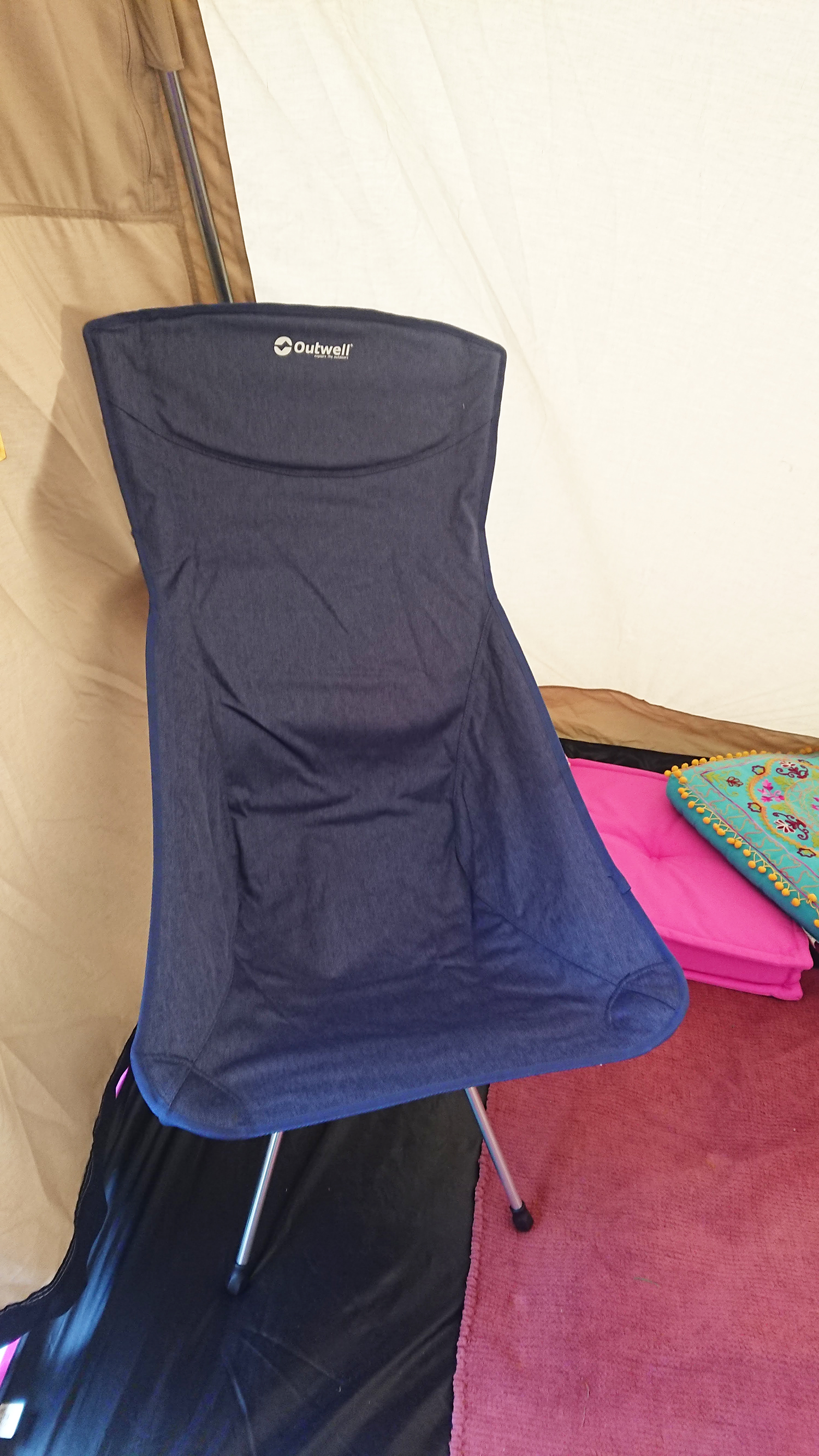 The chair up inside my tent
The chair up inside my tent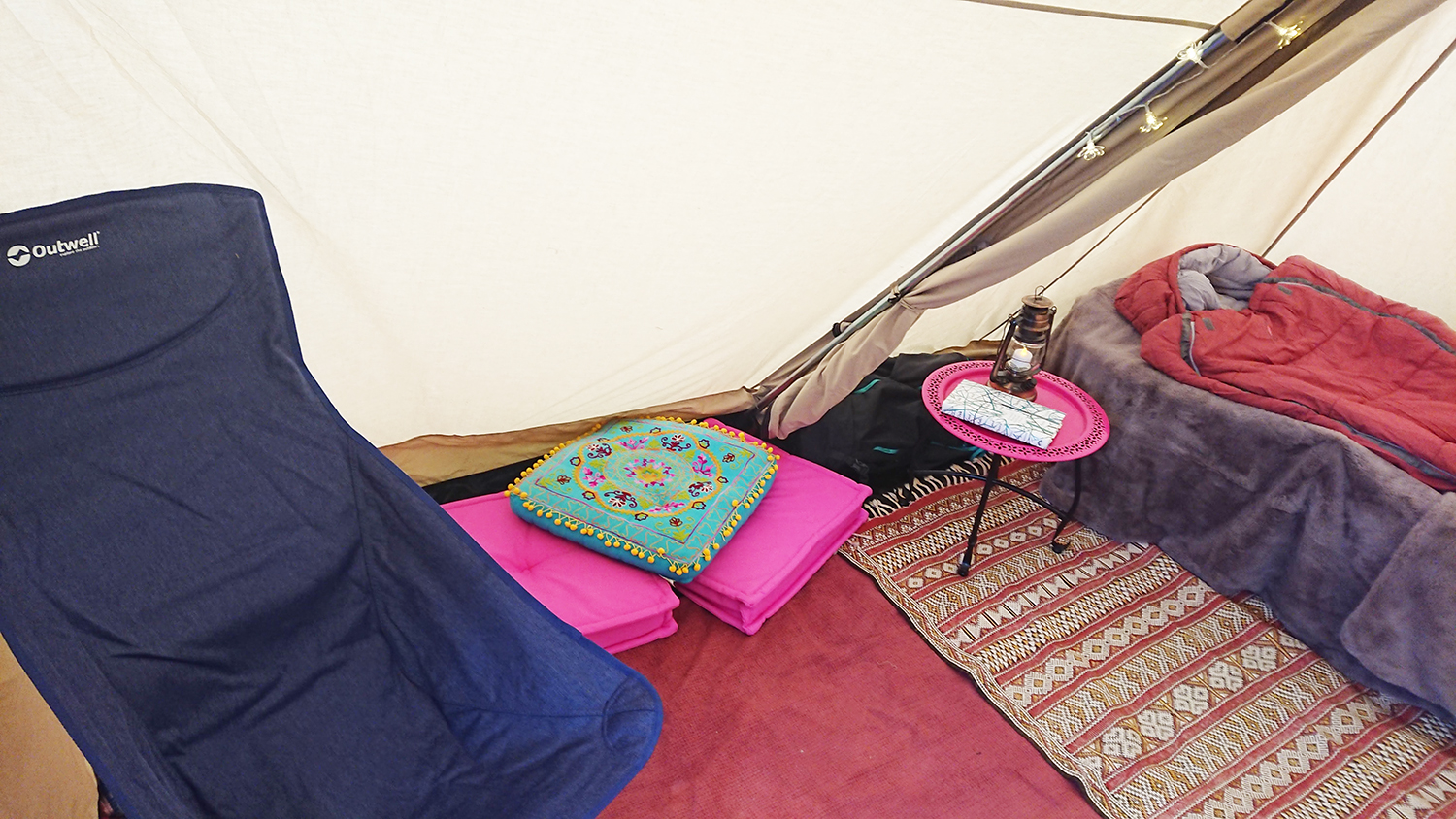
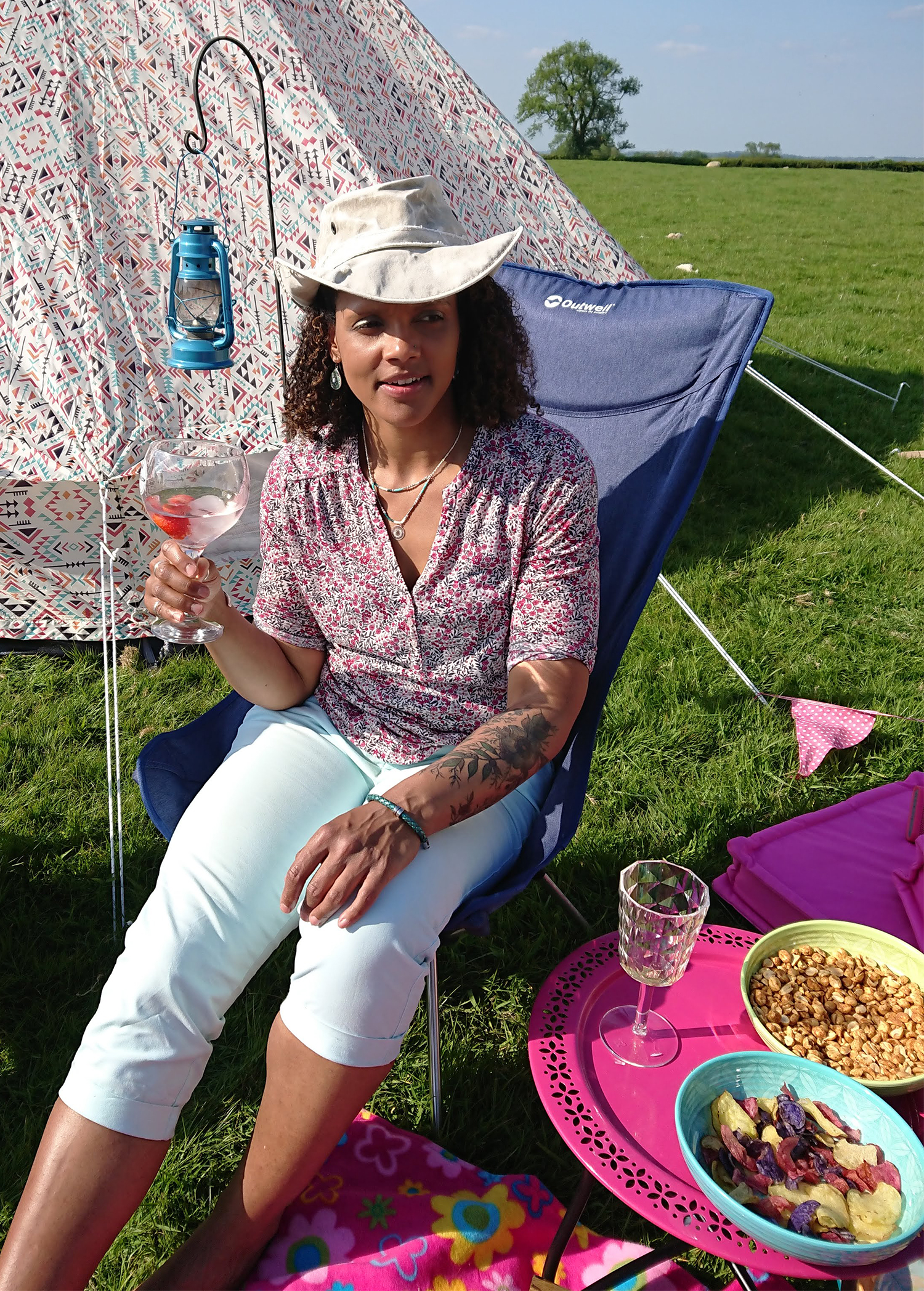 My sister enjoying a G&T in the sunshine on a recent family camping trip
My sister enjoying a G&T in the sunshine on a recent family camping trip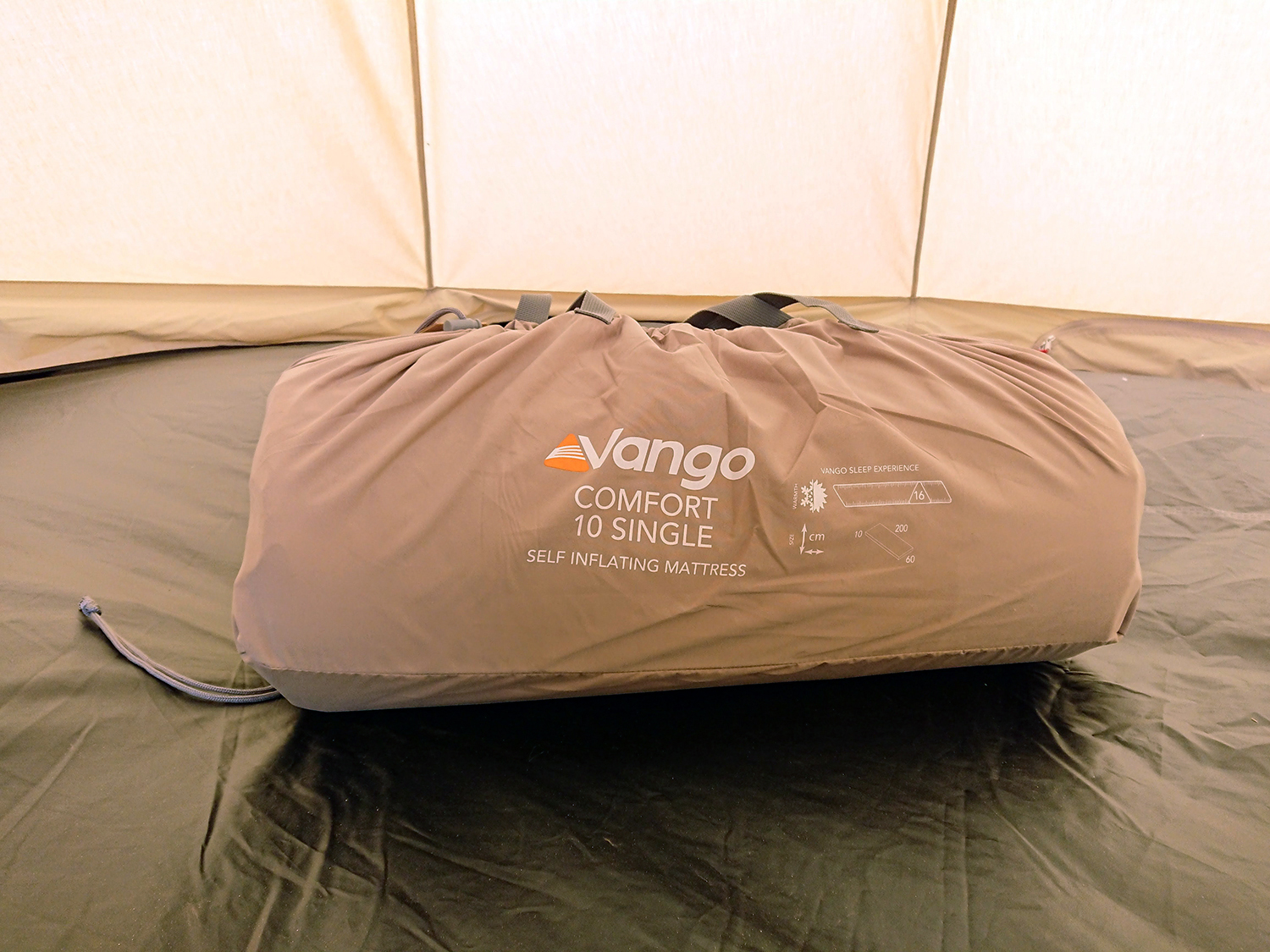
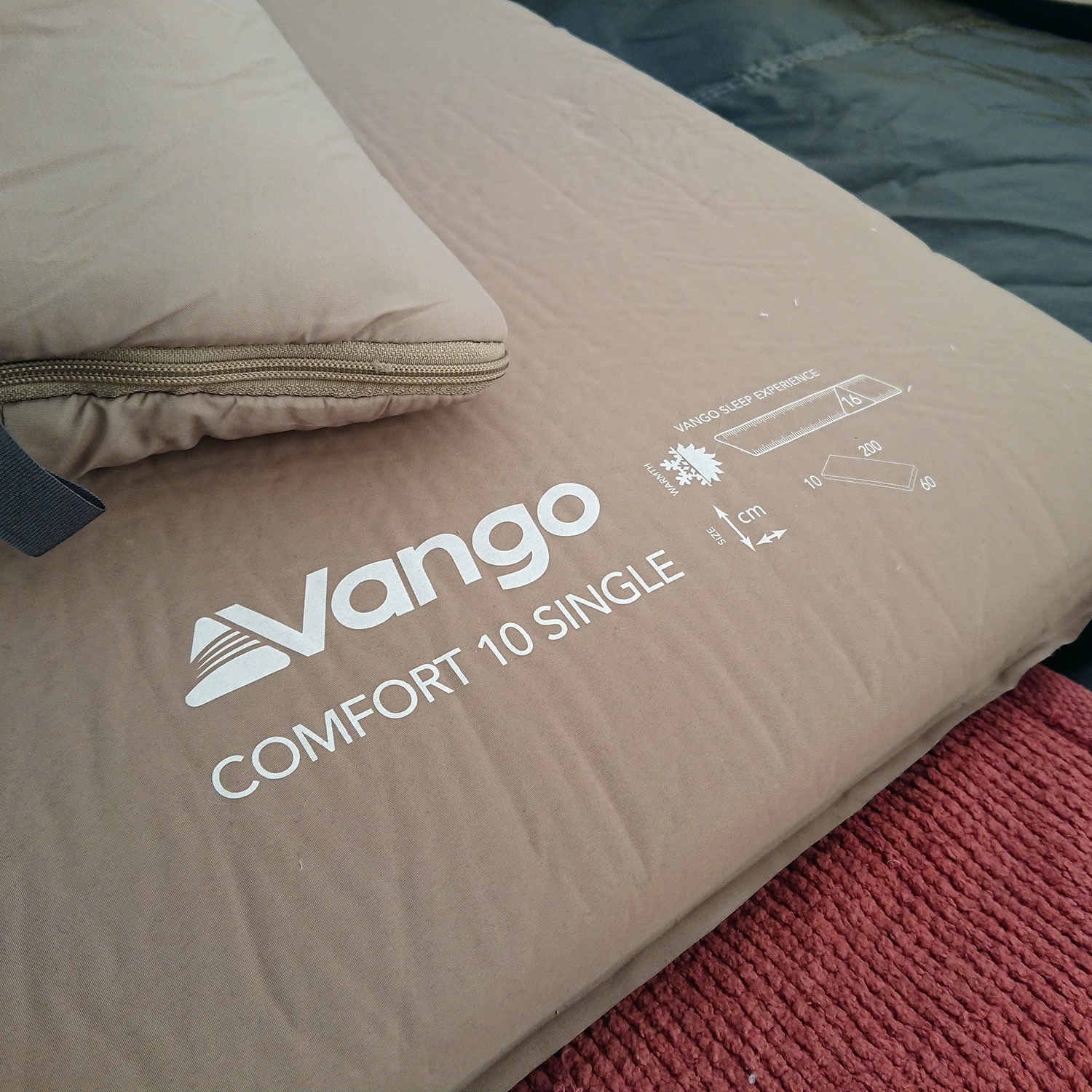
 At 10cm thick this self inflating mat is super comfy and very generously padded
At 10cm thick this self inflating mat is super comfy and very generously padded The air valve that allows you to easily inflate and deflate the SIM
The air valve that allows you to easily inflate and deflate the SIM The size of the SIM when rolled up placed next to a 0.6 litre water bottle for scale
The size of the SIM when rolled up placed next to a 0.6 litre water bottle for scale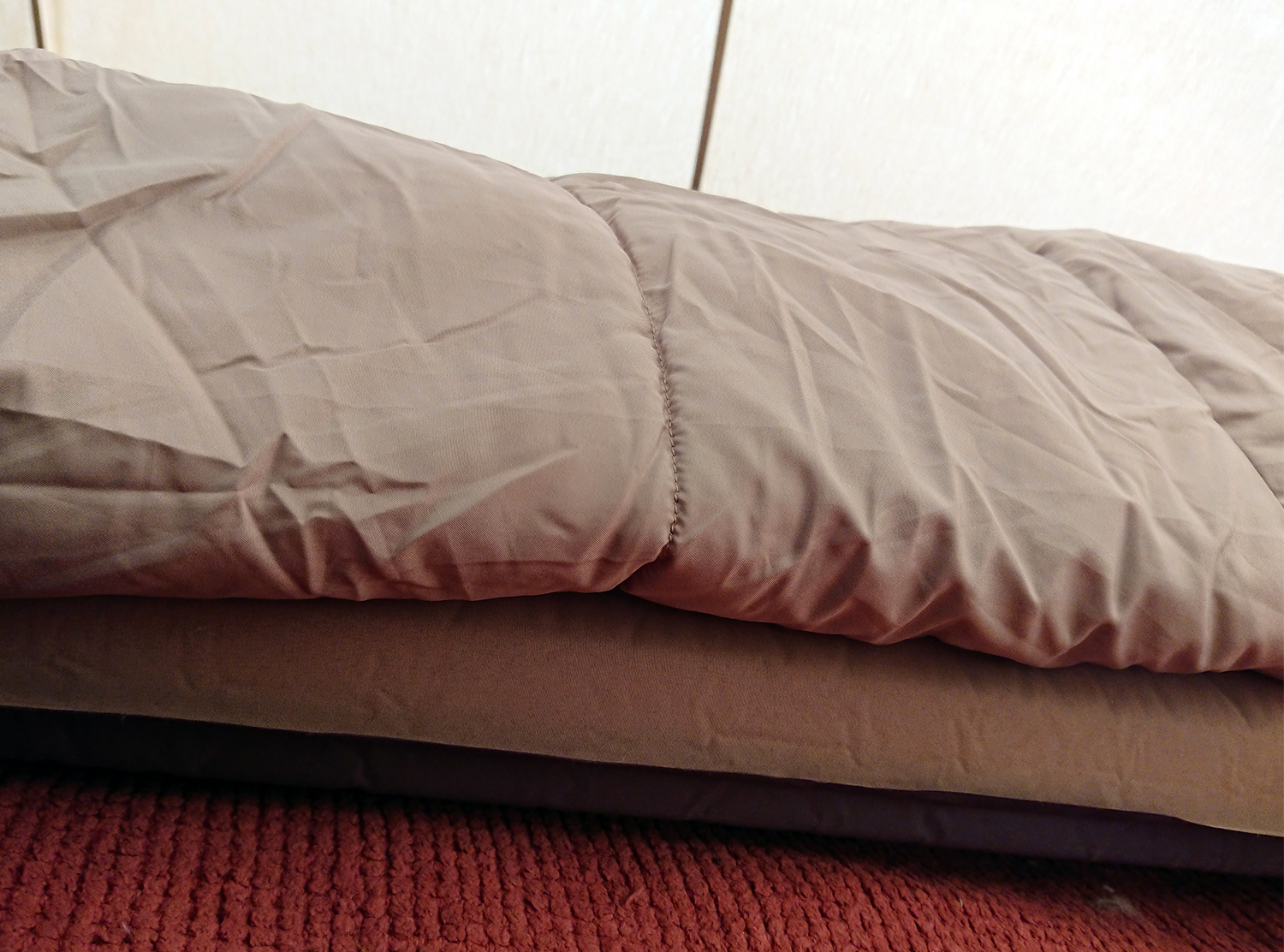 The thickness of the Comfort 10 SIM, shown with the Vango Harmony Sleeping bag on top
The thickness of the Comfort 10 SIM, shown with the Vango Harmony Sleeping bag on top